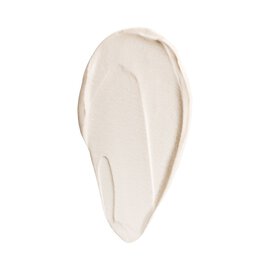What is a humectant cream?
Have you heard about humectant creams but don't know what they are? The first thing you need to know is what your skin is like and, when you know that, give it the care it needs and deserves. Let's make it easy for you to select the humectant cream or moisturizer that meets your needs.
The basis of beauty is to have a healthy, luminous, moisturized, plumped face. And we know that achieving this is not always easy. The key is to give your skin what it needs at all times. To do this, you have to choose the right product. Don't worry, we’re not going to go into detail about ingredients, nutrients, etc., it's enough for you to understand the key points that we’ll explain below. We promise to be clear.
A humectant cream is one that, due to its composition, presence of lipids, ceramides and butters, is able to retain moisture in the skin with its own emollients. It improves the skin's barrier function and prevents moisture loss.
Humectant creams vs. moisturizers
And now it's time to understand what each of these creams does. A humectant cream helps replenish the skin's natural oils, while a moisturizer provides the skin with the water it needs. It’s usually formulated with hyaluronic acid, capable of increasing its surface area a thousand-fold by retaining water.
In other words, dry skin does not produce enough natural oils to maintain its optimal level of moisture and needs us to provide them through a humectant cream, while dehydrated skin loses water excessively and what it needs is hydration, which we provide with a moisturizer.
In this dilemma between moisturizers and humectant creams, we invite you to consult a BIOEXPERT to recommend the best BLUE THERAPY solution for your skin type, and you won't have to worry about what is the difference between a moisturizer and humectant cream.
Properties and benefits of humectant creams
The first thing to do is to understand the difference between hydration and humectation. This will help you identify your skin's needs at any given moment. Skin that is perfectly hydrated and nourished is stronger and more resistant to environmental factors and looks healthier and more radiant.
Keep in mind that dry skin is a skin type while dehydration is usually a temporary condition that can be treated relatively easily and appears because of external factors.
Once we know how to distinguish between dryness and dehydration, we can implement the beauty routine that best suits our needs.
Humectant creams for every skin type
Attending to the needs of each skin type we include a specific moisturizer or humectant cream for each routine. For this, it’s very important that you know your skin type.
How do I know if I have dry skin?
Dry skin is characterized by the appearance of any of these symptoms or a combination of them: roughness, itching, flaking, cracked appearance, ashy tone, redness and a feeling of tightness. Humectant creams are suitable for all skin types but are especially recommended for this type of skin.
When to use a humectant cream?
For all skin types, BIOTHERM has developed Blue Therapy Multi Defender SPF25, a comprehensive humectant cream. Its innovative anti-aging formula repairs and protects against age accelerators, pollutants and UV rays. In addition, it prevents water evaporation, promotes the intake of water needed by the skin and contains Alga de la Juventud™ extract, an active ingredient that fights dark spots, wrinkles and lack of firmness.
At night, if your skin is dry, a more textured humectant cream is best. Try Blue Therapy Revitalize Cream-in-Oil, with naturally-derived oils and an ultra-fresh, fast-absorbing formula.
How do I know if my skin is dehydrated?
Dehydrated skin often looks dull and cracked. If you pinch yourself gently and notice that it takes a couple of seconds to return to its natural state, you have a dehydration problem. Expression lines are more pronounced if your skin is dehydrated and by simply moisturizing, they are filled in, revealing a brighter and smoother face.
When to use a moisturizer?
Always. Regardless of whether your skin is dehydrated or not, remember that a moisturizer should be a staple in your beauty routine, as following a balanced diet and drinking plenty of water is not enough to keep your skin hydrated at all times. In normal skin, it is important to maintain hydration levels and take steps to prevent dehydration with products such as Aquasource Hyalu Plump Gel, a daytime moisturizer that is ideal for both normal and dehydrated skin.
Enriched with Biotech Plankton™ and mannose, it provides up to 48 hours of intense hydration whatever the conditions. If you want an extra boost, we recommend Aquasource Night Spa before bed, the ultimate skincare experience to replenish hydration levels while you sleep.
Remember that an effective beauty routine should include at least one cream, either a moisturizer or humectant, depending on your needs. Although moisture and hydration are two different things, they often work together to get the most out of your skin.









